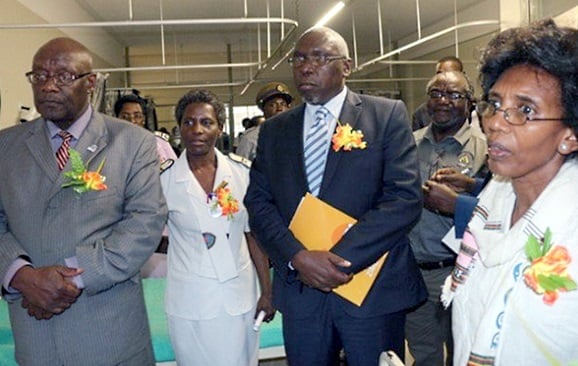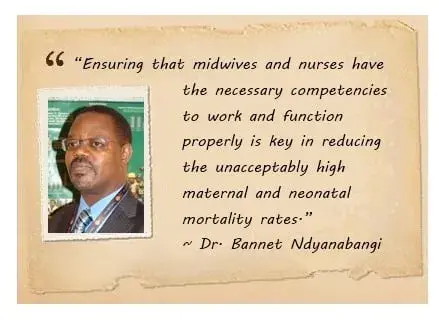In 1981, heavily pregnant Mary Maropa* left her village in Nkayi for hospital, expecting to return with a newborn baby. Little did she know that she would return instead with urine leaking uncontrollably from her vagina, a medical condition known as vesicovaginal fistula (VVF).
Due to prolonged labour pains coupled with complications during delivery, she had lost her unborn baby - and her dignity.
VVF occurs when a woman struggles in labour for days without giving birth. The pressure of the baby’s head cuts off the blood supply to delicate tissues, causing a hole to form between the birth canal and the bladder. It is from this hole that urine leaks uncontrollably.
It was so embarrassing to talk about it to any other person or be around people because they would talk about the stink of urine around them. - Mary Maropa, fistula sufferer
“From this day, I started wearing sanitary pads because I could not control my bladder anymore,” said Mrs Maropa.
“Although my husband did not leave me because of my condition, it was so embarrassing to talk about it to any other person or be around other people because people would talk about the stink of urine around them,” she said.
Nurses did not refer her for help

© UNFPA / Margret Masanga
Despite her fistula, she went on to deliver three more children, now aged 22, 20 and 18 years, yet the nurses who attended her professed their ignorance of the condition. Nor did they refer her for medical assistance.
Thirty-five years later, while listening to the radio Mrs Maropa heard about the burden of obstetric fistula in Zimbabwe and the fistula repair camps planned for Chinhoyi Provincial Hospital. She decided to approach the health facility.
Mrs Maropa joined 86 other women from different parts of Zimbabwe with similar - or worse - conditions, who have successfully undergone corrective surgery at Chinhoyi Provincial Hospital. They are the beneficiaries of a government programme aimed at ending fistula in Zimbabwe.
At the fistula camp, 18-year-old Mary Muzadzi* from Chipinge presented with two types of fistulas — vaginal and rectal.
The factors that lead to vaginal fistula are the same as those that lead to rectal fistula, but in the latter case the result is a hole formed between the birth canal and the rectum. Mrs Muzadzi leaked urine and faeces through her vagina. She had tried to deliver her baby at home due to the distance to the nearest clinic, but in this she failed.
On day three of labour, Mrs Muzadzi said, she was ferried to the clinic in a scotch cart, where she had a stillbirth through Caesarian section. The vaginal and rectal fistulas had already formed.
I was actually contemplating going back to my parent’s home before I heard of the repairs at this hospital. - Mary Muzadzi, fistula sufferer
“This happened in April last year and since then I have stopped (having) sexual intercourse with my husband. The pregnancy that led to this abnormality was my first, so I was actually contemplating going back to my parent’s home before I heard of the repairs at this hospital,” she said.
It is not only Mrs Muzadzi and Mrs Maropa who suffer from this condition; about 500 women from different parts of the country with similar conditions are currently awaiting corrective surgery.
High success rate for fistula repair
Women and Health Alliance (WAHA) representative Dr. Michael Wolde Ambaye, whose organization is conducting the surgery with assistance from local surgeons, said there was no reason for women with obstetric fistulas to continue leaving with the disability.
“Obstetric fistula is preventable but on top of that it can be treated. For the operations we have done so far, we have seen a 96 per cent success rate,” she said.
Dr. Ambaye said of the 86 success stories, 80 women had a vaginal fistula, 5 women had a rectal fistula, and 5 others had both vaginal and rectal fistulas. Four operations were deemed not fit for operations, she said.
Dr. Ambaye is working with another expatriate doctor, six doctors from Harare and Bulawayo hospitals, two doctors from Chinhoyi hospital and several other health workers. “This is meant to share skills with local health workers to ensure continuity and sustainability of the programme when we leave Zimbabwe,” she said.
The response for both camps was overwhelming, and we have 500 women currently on the waiting list. - Cheikh Tidiane Cisse, UNFPA Zimbabwe Representative
UNFPA Zimbabwe Representative Cheikh Tidiane Cisse said efforts towards ending obstetric fistulas in Zimbabwe started in 2009 with a survey to establish the actual burden of the condition among women. In September 2015, the Government in partnership with UNFPA and WAHA conducted its first ever fistula repair camp, where 30 women were operated on. The second camp was held in November and December 2015, and the third opened in April and will run until this month.
“The response for both camps was overwhelming, and we have 500 women currently on the waiting list. This clearly shows that there is a gap in treatment for women with fistulas,” said Mr. Cisse.
Mr. Cisse commended the government for embracing the initiative and said that the majority of the affected were the poor, who cannot afford corrective surgery.
Robbing women of dignity and status
“We have heard how this condition can rob women of their dignity and status in society, rob them of their source of livelihoods by forcing them to be confined to the back of their homes and leave them ostracized and humiliated,” he said.
Obstetric fistula is one of the most serious and tragic injuries that can occur during child birth. Obstetric fistula affects over two million women and girls worldwide and between 50,000 and 100,000 new cases develop each year. Although the actual burden is not known in Zimbabwe, the Government survey conducted in 2009 showed that at least 88 women with the condition were seen at central, provincial and district hospitals in 12 months preceding the survey.
* Name changed to protect identity
This article was first published by the Herald Newspaper.





